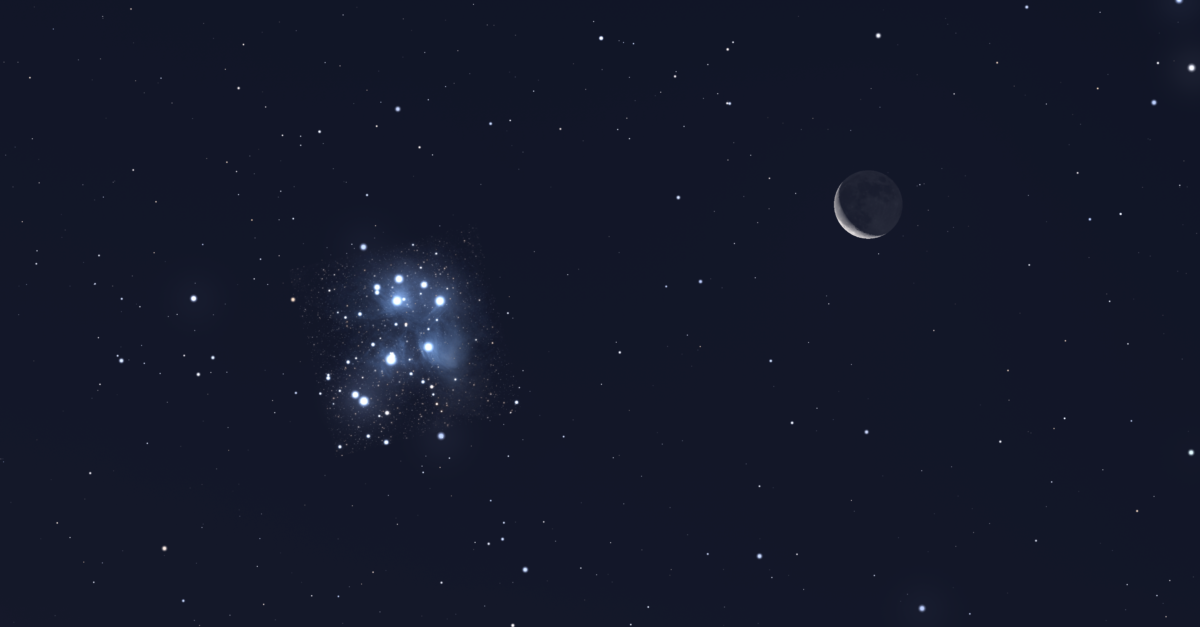
The best of the solar system and our galaxy’s deep-sky objects make a joint appearance in our sky this week, as the Moon slides by the Pleiades (M45). In the early morning sky of July 2, observers in the Americas will see a slender, waning crescent Moon just a few degrees away from the Pleiades open star cluster. (The two objects are at their closest a few hours later, meaning observers in eastern Asia and Oceania will see the pair similarly close to one another in their early morning sky of July 3.)
You’ll also be able to spot a pair of nearby planets — Jupiter will be below and to the left of the Moon, shining at magnitude –2 just above the horizon, and Mars will be shining at around first magnitude just above and to the right of the Moon. Farther past Mars along the ecliptic, facing southeast, will be Saturn, also glowing at first magnitude. This is a great chance to see the solar system in action — and the galaxy beyond.
Follow Astronomy magazine, the world’s best-selling astronomy magazine:
🌎 Website: https://astronomy.com
📖 Subscribe: http://subscribe.astronomy.com
📘 Facebook: https://www.facebook.com/AstronomyMagazine
📸 Instagram: https://instagram.com/astronomy.magazine
🐦 X/Twitter: https://twitter.com/AstronomyMag
Shop Celestron telescopes:
🔭 Website: https://celestron.com
Follow Dave Eicher:
📘 Facebook: https://www.facebook.com/davidjohneicher
📸 Instagram: https://instagram.com/eicher.david
🐦 X/Twitter: https://twitter.com/deicherstar









